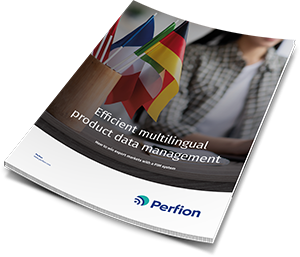
Once you have seen how your company's webshop can contribute to a greater turnover in your home market, it makes sense to consider whether you should expand your market and sell your products in more countries.
Online shopping is an open door to the global market
Marketing is complex, and one of the tasks that can give marketing managers grey hair is when the company wants to expand its online sales from one to several markets, thus requiring a switch from marketing in one language to several languages.
On the other hand, online shopping is an obvious opportunity to reach the global market. This is far less demanding than having to establish local sales offices in all the new countries.
However, there are a number of areas that you, as marketing manager, need to master.
Multiple languages, currencies, shipping options and customs regulations are just some of the parameters your e-commerce platform needs to handle without difficulty. It can also be a major task to translate all the product descriptions and other product information into the new languages. And the task does not end here, because every time there is a change to a product, the existing product information must also be updated in all of the webshop's languages, and this in itself can be a very extensive project.
This is where a Product Information Management (PIM) system comes into the picture. Via a PIM system, you can manage all product information – including your new language variants – from one central point.
|
Efficient multilingual |
A PIM system for managing translation and editing
In a PIM system, all your product information is stored and maintained in all the different languages you need. And we really mean ALL types of product information: product descriptions, marketing texts, technical information, data sheets, related information, images, video and audio files. Even the product data that you have in your ERP system can be accessed via a PIM system, so that it can also be maintained from there.
It is easy to export product data and information from a PIM system in a format that translation agencies can work with, for example. When the translations are ready, they are just as easily imported into the PIM system again and land in the right places. From there they are sent directly to your webshop in all the required languages.
All product information for the webshop is organized in the PIM system
In a PIM system, you can organize your product information in exactly the way that you want it displayed in your online shop. It is no longer necessary to log into your e-commerce platform to change the order of the products or to add products or product data.
This is all handled in the PIM system, and your changes are reflected automatically and immediately in your online store – and in all the other sales and marketing channels you choose to connect to your PIM system.
The cumbersome task of copying translations into the right places in your e-commerce platform can be crossed off your to-do list. Everything is controlled via the PIM system. This eliminates a large part of the administrative work involved in translation tasks.
When a PIM system is connected to the webshop, the marketing department can sleep soundly at night. Now the products are guaranteed to be presented online as they should be and the necessary product information is always available in the correct version and in all languages.
Of course, there are still a number of complex and demanding maneuvers associated with marketing your products globally, but handling product information across markets and languages is no longer an obstacle.
Would you like to know more?
Download your guide
 Want to learn even more about how to succeed with sales in multiples countries?
Want to learn even more about how to succeed with sales in multiples countries?
Download "Efficient multilingual
product data management".
Updated in October 2022
